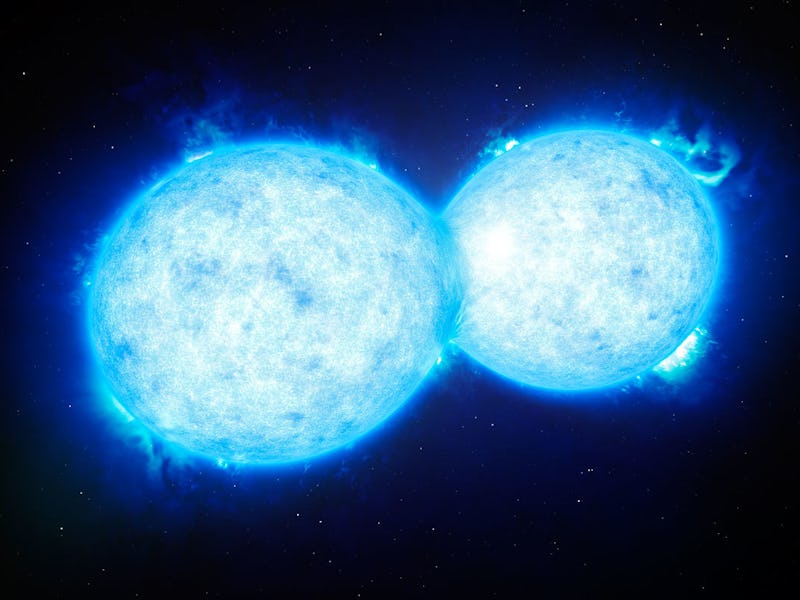Colliding Stars Will Either Unite or Destroy Each Other
If the twin suns of the Tarantula Nebula don't team up, VTS 352 is gonna get dicey.

About 160,000 light years away from Earth, in the Tarantula Nebula, lies VFTS 352. It’s a contact binary star system — which means it’s essentially a pair of very hot, bright, massive stars that constantly orbit one-another. In fact, these stars are so close that they touch each other across a bridge of intense energy. The two stars have a combined mass of more than 57 times Sol, our Sun.
And their billion-year waltz is coming to an end. Astronomers now believe that a collision is inevitable.
Researchers in charge of the European Southern Observatory’s aptly named Very Large Telescope have recently found that the two stars comprising VFTS 352 are merging together in a kiss of life or death that could result in either a single giant star, or a binary black hole. It’s either the birth of a new life together, or death and destruction — nothing in between.
Binary star systems are not all that uncommon. What’s unusual about VFTS 352 is that both stars are about the same size. This means that instead of one star absorbing the material of another, that matter is harmoniously shared (well, as harmonious as surface temperatures rising above 40,000 degrees Celsius can be). The stars in VFTS 352 seem to share about 30 percent of their material.
The location of VFTS 352 in the Tarantula Nebula
It’s a very rare and very short celestial phenomenon, making it even more amazing that we’re able to observe this happening. If the two stars don’t merge into a single gigantic star, they could end their lives in a supernova explosion that would then collapse into a pair of black holes.
Either way, Earth researchers have the best seats in the house — far enough away to survive yet close enough to see.